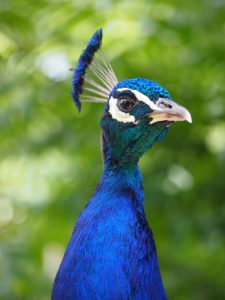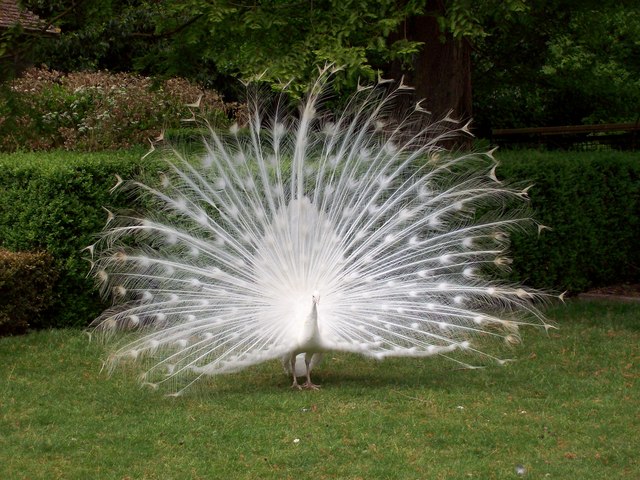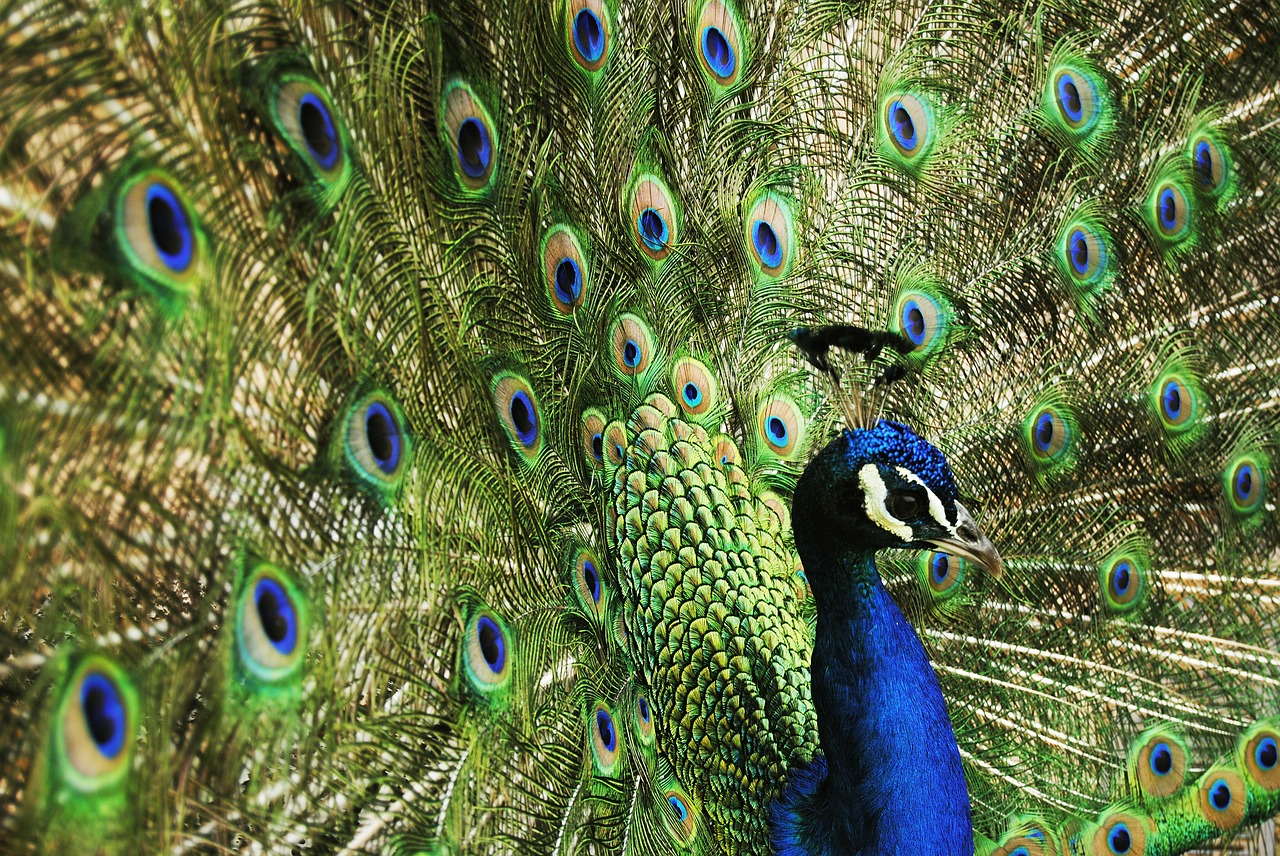We use affiliate links to run our site. When you buy through links on our site, we may earn an affiliate commission, without any added cost to you. Learn more
From Indian national animal to Indian national bird. This article is all about peacock information and interesting peacock facts.
Interesting Peacock Facts
Peacock generally refers to the male peafowl. They are found in the Indian subcontinent and in some parts in Sri Lanka.
Though most of us use the term to describe both male and female peafowl. Technically peacock is the male peafowl. And the female peafowl is called peahen. Here in this blog we will refer both of them as peacocks for easy understanding.
There are 3 known subspecies of peacocks (peafowls) viz. Indian or blue peafowl, green peafowl, and Congo peafowl.
Scientific name of peacock is Pavo cristatus

Only the male species have tail feathers or plumage females don’t have these. These feathers are not present since birth.
They developed after 2 years and is becomes fully developed after 4 years. Each tail feather has an eye-like a spot and it is called ocellus.
You can read more about peacock feathers in this latest article.
The tail makes 60% of the body length of the peacock.
They have a crested head.
They are a social animal and requires companionship.
The male peacock can be of 4-6kgs and female is of 2-4 kgsin weight.
One of the amazing facts about a peacock is that in spite of their big sizes they actually can fly. They are among one of the largest flying birds. The wingspan is about 4.6-5 feet.
Peacocks are polygamous i.e, they mate with one than one female. They have a harem of 2 to 3 females. To persuade females peacock raise their tail feathers and create a fan-like structure.
The Congo peafowl doesn’t have the train of feathers. Indian peahens are largely brown, which allows them to blend into surrounding vegetation and avoid detection by predators.
Peacock Diet:
Peafowls are omnivorous i.e, they eat both meat and vegetables. The meal consists of berries, seeds, leaves, insects, small mammals, and reptiles.
They are one of loudest birds and can produce many vocalizations. The frequency of calling is increased in the monsoon season. In the wild, their calls indicate the presence of some predator like a tiger.
Their main predators are tigers, leopards, Mongoose. They fly and hide in trees when threatened. They spend on the trees in the night.
The average lifespan is about twenty years.
There is no blue or green pigment is present in the tail feathers of a male peacock. The color comes from reflecting light at some particular angles.
Albino peacock or White Peacock?

There is no albino peacock. Due to some genetical mutation, some peacock loses their pigmentation and they appear white. But unlike an albino, the color of their eye remains normal. White peacock can be a common phenomenon in a captive situation.
Peacock is celebrated in Indian and Greek mythology.
IUCN Red list lists Indian Peacocks as least concerned. Whereas, the green peafowl is endangered and Congo peafowl is vulnerable as per the list.
Hope you liked the peacock facts. If you want to add any please use the comment section. You can also share these pieces of information about peacock with kids.
For more information about peacocks and peahens check out PEAFOWLS, PEACOCKS, AND PEAHENS BY ELLIOT LANG
Related Articles:
Interesting Facts About Dolphins
Interesting Facts About Cheetahs
Amazon and the Amazon logo are trademarks of Amazon.com, Inc, or its affiliates.

Guilherme. Emocionante. Parabéns. Continue buscando as belezas de natureza.São tão ricas como a sua alma. Super beijos .lia
Guilherme i like it.so much
This comment has been removed by the author.
This comment has been removed by a blog administrator.
The Khasi myth has something about peacock that relates with reality. I would like to ask 1. regarding the behaviour of peacock at dawn before sunrise and at dusk before sunset. 2. Relation between peacock and mustard flowers, if any. Thank you Prasenjit for the valuable information, Hope that you have answers for the two phenomena. Thanks again.
Does your sie have a contact page? I’m having a tough time locating it but, I’d like
to send you an email. I’ve got some recommendations for
your blog yyou might bee interested in hearing. Either way, great blog and I look forwaard to seeing
it expand over time.
You actually make it seem so easy along with your presentation but I to find this topijc to bee really something that I believe I might
by no means understand. It kind of feels tooo complicated and extremely extensive for me.
I’m taking a look forward on your next publish, I’ll try
to get the grasp of it!
I’m not that much of a internet reader to be honest bbut your sites really nice, keep it up!
I’ll goo ahead aand bookmark your website to come back later on. Many
thanks
Thanks guys for every little thing.
Hello everyone, it’s my first go to see at this web page, and piefe
of writing is actually fruitful in favor of me, keep up posting such content.
What’s up, I read your blogs on a regulr basis. Your humoristic style is witty, kesp doing what you’re doing!
Everything is very open with a really clear clarification of the
issues. It was definitely informative. Your site is useful.
Thank you for sharing!
Sustain the excellent work and bringing in the crowd!
Wow, lovely portal. Thnx ..
I’m extremely impressed with your writing skills as well as with the layout on your blog. Is this a paid theme or did you customize it yourself? Anyway keep up the nice quality writing, it rare to see a great blog like this one today..
It is really a great and helpful piece of information. I¦m glad that you shared this useful information with us. Please stay us up to date like this. Thanks for sharing.
Some genuinely wonderful articles on this website, thank you for contribution. “Careful. We don’t want to learn from this.” by Bill Watterson.
I really appreciate this post. I’ve been looking all over for this! Thank goodness I found it on Bing. You’ve made my day! Thank you again